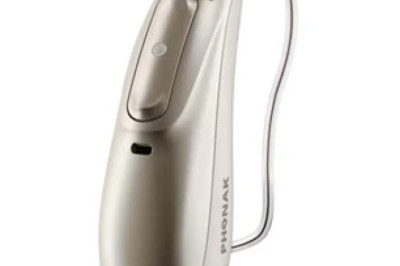views

Sale Of A Principal Residence - 2021 | Best Guide - CPA Clinics
Principal residence defined. A principal residence is your main home, which is the home where you ordinarily live most of the time. You can have only one main home at any one time.
Individual homeowners. Individuals can exclude up to $250,000 of gain on the sale of a home if three tests are satisfied.
1) Ownership. You owned the home for at least two years during the 5-year period ending on the date of sale,
2) Use. You used the home as a principal residence for at least two years during the 5-year period ending on the date of sale, and
3) Two-year period. You did not exclude gain from the sale of another home during the 2-year period ending on the date of sale.
If you are a co-owner, you must calculate gain or loss according to your ownership interest in the home and then apply the exclusion rules on an individual basis.
Married homeowners. Married couples can exclude up to $500,000 of gain on the sale of a home if:
1) Joint return. You, as a couple, file a joint return for the year,
2) Ownership. Either you or your spouse meets the ownership test, above,
3) Use. Both of you meet the use test, above, and
4) Two-year period. Both of you meet the 2-year period test, above.
If either of you do not meet all the requirements, you can exclude the total of the exclusions that each of you would qualify for if not married and the amounts were calculated separately. For this purpose, each of you is treated as owning the property during the period that either of you owned the property.
The required two years of ownership and use during the 5-year period prior to the sale do not have to be continuous. The ownership test and the use test can be met at different times during the 5-year period. Short, temporary absences for vacations or other seasonal absences are counted as periods of use (even if the property is rented out during the absence).
Surviving spouse. A surviving spouse who does not remarry before the sale of a home is considered to have owned and used the home as a primary residence during the deceased spouse’s ownership and use period. The $500,000 exclusion applies to unmarried individuals provided the sale occurs not later than two years after the date of death of the deceased spouse, and the couple would have qualified for the $500,000 exclusion if the sale had occurred immediately before the date of death.
Home transferred from spouse. If you acquire a home in a transfer from your spouse (or former spouse if the transfer was incident to divorce) you are considered to have owned the home during any period of time your spouse (or former spouse) owned it.
Divorced individuals. You are considered to have used a home as a principal residence during any period when (1) you owned the home, and (2) your spouse or former spouse is allowed to live in it under a divorce or separation instrument and uses the home as a principal residence.
Inherited home. If you inherit a home you are generally not eligible for gain exclusion unless you meet the ownership and use tests for the inherited home.
The sale of vacant land is not treated as a sale of your principal residence unless:
If these requirements are met, the sale of the principal residence and the vacant land are treated as one sale. Only one maximum limitation amount of $250,000 ($500,000 for eligible MFJ) applies to the combined sales.
If you do not meet the 2-year ownership and use tests, or you have already excluded gain from the sale of another home during the 2-year period prior to the sale of a current home, you may claim a partial exclusion on the sale of a home if the primary reason for the sale is due to:
1) A change in place of employment of a qualified individual,
2) The health of a qualified individual, or
3) Unforeseen circumstances.
Qualified individual. For purposes of the partial exclusion, a qualified individual is you, your spouse, a co-owner of the home, or a person whose primary residence is the same as yours.
1) Change in place of employment. Employment includes the start of work with a new employer, continuation of work with the same employer, and the start or continuation of self-employment.
Distance safe harbor. A change in place of employment is considered to be the reason you sold a home if:
2)Health. You can claim a partial exclusion if the primary reason for the sale is:
3) Unforeseen circumstances. The partial exclusion rules do not apply if the primary reason for the sale was a preference for a different home or an improvement in household finances.
Specific event safe harbors. Specific event safe harbors include the following.
Facts and circumstances. If you do not meet the specific event safe harbor rules you may still be able to claim a partial exclusion.












